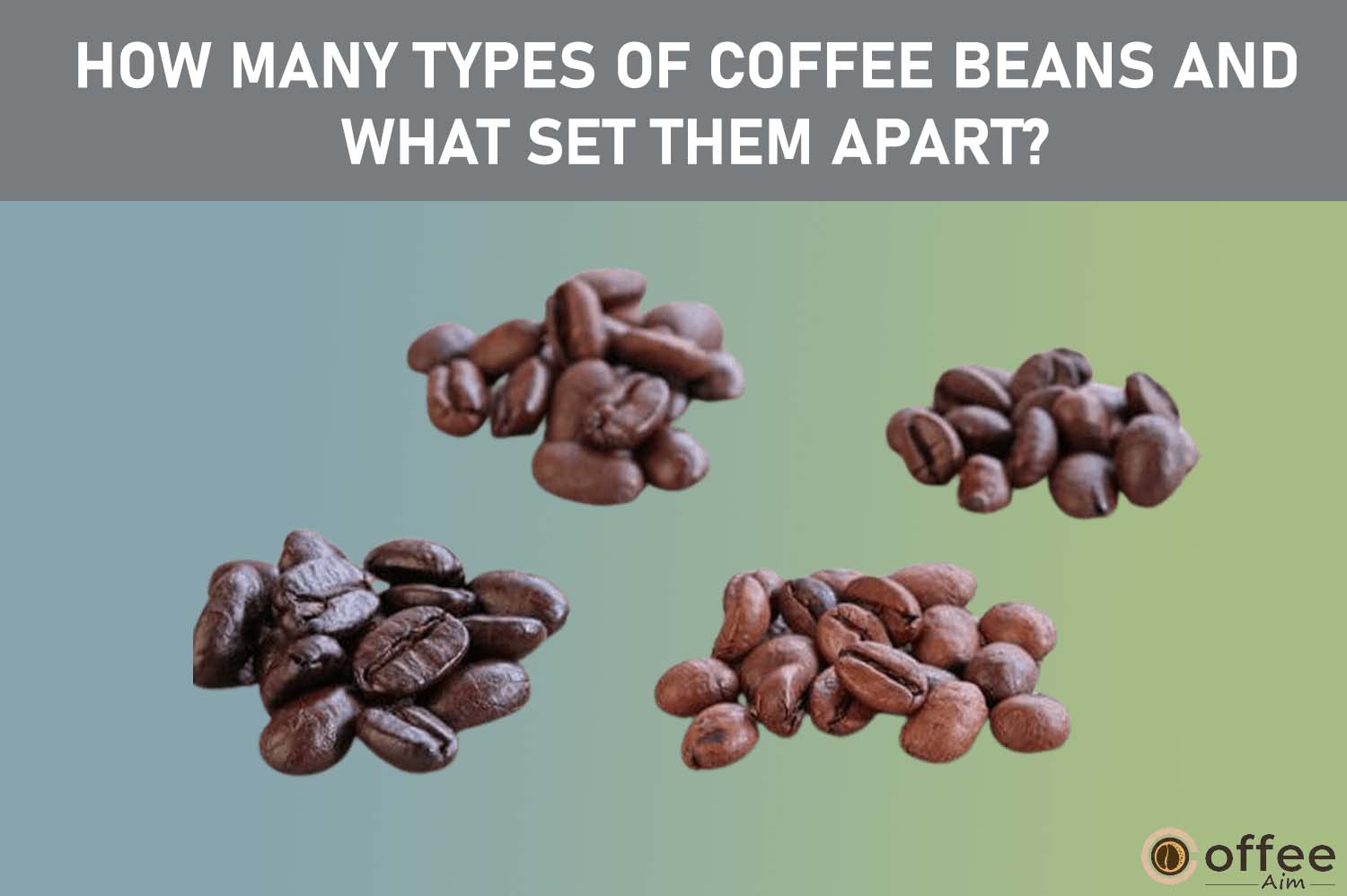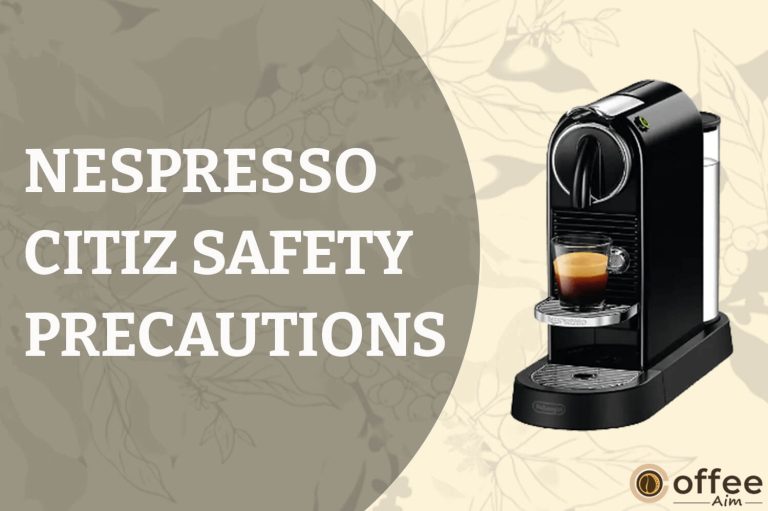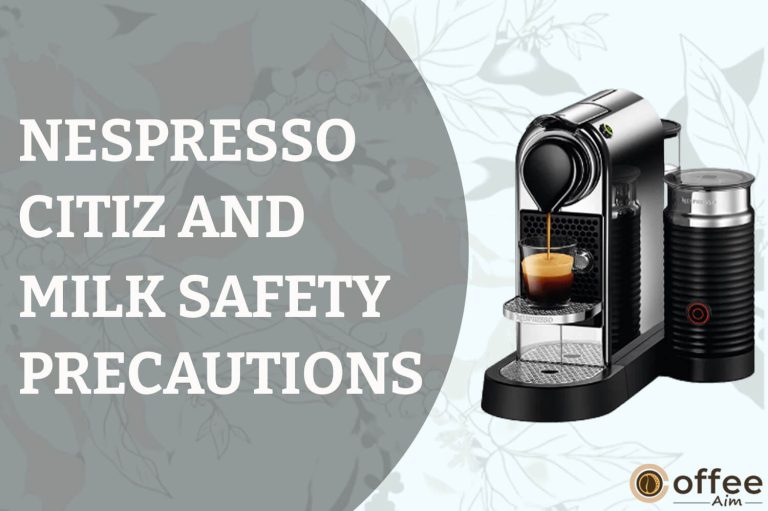
Quick Navigation
If you’re a newbie to the world of coffee, you might find the sheer volume of coffee varieties available on store shelves and coffee recipes in restaurant lists. They can be utterly overwhelming. Among the literally thousands of coffee varieties out there, how do you determine what’s what? And how do you choose good coffee beans to try for the first time?
We’re going to give you a basic overview of the different types of coffee beans, so next time you’re in the coffee aisle, you won’t panic.
First, what is coffee?
Simply put, coffee is the brewed drink of coffee beans. Coffee beans are far different from your grocery store-variety vegetable beans: they are literary beans but not exactly the vegetable beans. Exactly they are pitted out of a famous fruit coffee cherry. We don’t eat the fruity outer part but the seed instead.
If you are a true coffee aficionado or a perfect connoisseur, you will want to note the difference in the types of coffee beans, their tastes, and flavors. With such a range of styles and flavors, I’m sure you’ll find the best kind of coffee beans for you.
There are over 120 coffee species all over the world, but we won’t get into the complexities of all that right now. Instead, let’s keep it simple and take a look at the main types of coffee beans:
There are four types of coffee beans
All over the world, coffee is made from Arabica, Robusta, Liberica, and Excelsa, And these types of coffee beans are used to make thousands of coffee varieties and blends.
Many other factors influence your daily cup of joe including the coffee beans character, like the bean region, caffeine, sweetness, bitterness, acidity, body, and flavors. Understanding a little more about the general coffee beans types, as to how they’re grown, processed, roasted, and brewed can help you choose the best coffee to go with your moment or mood. We will discuss them all in this article.
-
Arabica (Coffea Arabica)
There are many sub-species of Arabica that are called varieties. These include Bourbon, Cattura, and Typica, for example. Kona coffee beans are also a popular type of Arabica coffee bean grown on the slopes of the mountains of the Kona district in the Hawaiian island. Kona coffee beans are famous all over the world because of their taste, flavor, and aroma. If you are interested in buying Kona coffee beans, we have written a buying guide on Kona coffee beans. You can read our guide and buy the best Kona coffee beans.
History
This delicious coffee bean was born centuries ago in the mountains of Ethiopia or Yemen and is the oldest type of coffee in the world. These areas were known as Arabia and today these areas are known as Yemen.
Price and market value
Arabica beans are the world’s most popular type of coffee, it accounts for over 60% of the world’s coffee production. So Arabica is the precious and loveliest bean of the world.
Cultivation
Arabica beans need extra shade, water, and a height of at least 2,000 feet to grow properly. These plants are more susceptible to diseases. Cultivating it in large quantities is a challenge. Nature has made the growth of Arabica beans as difficult as it is tasty. And for these two reasons, these are the most popular and most expensive coffee beans in the world. But many coffee drinkers around the world are happy to pay this high price because of the soft and sweet taste.
Caffeine content
Arabica has less caffeine content than its three counterparts Robusta, Liberica, and Excelsa, which is 1.61 g/100 g and
Taste
Most of the time it is seen that high-quality coffee brands advertise that they use 100% Arabica beans. Why? This is because Arabica coffee beans are considered to be very high-quality coffee beans. They are known all over the world for their smooth, complex taste, a satisfying amount of acidity, multi-layered intricacy of flavors and aromas, and clear lack of bitterness. They have less caffeine than the other coffee beans out there.
Where do you find it?
For best results when brewing this coffee at home, look for Arabica coffee. These beans are widely available in the market, but be careful not to be deceived. Check the label carefully to make sure it doesn’t contain Robusta beans, another type.
If you want to avoid deception completely, you should buy full body coffee grains, instead of buying coffee bean powder. Because such cheating is less likely. Higher quality Arabica beans have a bright body, not completely round but oval.
Regions
The most common in North America is Arabic.
Brazil, known for its lush forests, is the world’s largest exporter of Arabic beans.
One thing to note about the famous but sensitive beans is that; It is best served hot, perhaps brewed with the pour-over or drip coffee technique, because the quality of the Arabica bean diminishes when served cold or with creamer.
While this may be the case, it is fair to say that the difference will not be noticeable when you are adding some extra flavor to the beverage anyway.
-
Robusta coffee beans (Coffea Canephora)
Regions
When it comes to global production, the second most popular type of coffee bean is Robusta. The bean is most popular in Europe, the Middle East, and Africa. Robusta originated in sub-Saharan Africa and is now grown mainly in Africa and Indonesia. It is especially popular in Vietnam.
Price
It is a less expensive variety which is why it is a budget choice for coffee roasters. They often blended Robusta with coffee Arabica. A roaster might save up to 20% on the cost of raw beans by using 3 parts Arabica to 1 part Robusta in a given batch.
Cultivation
These plants are usually much larger than the Arabic plants, measuring 15 to 20 feet. Robusta beans are generally considered tough because they can grow at high altitudes. They also have extremely high levels of caffeine, which makes the plant far more resilient than the Arabica species. It was previously thought that the Robusta (Coffea Canephora species) is particularly tolerant of its environment, so it can be grown in any number of altitudes and climates, but recent research shows that they do not tolerate heat.
However, because it’s so much easier to grow and harvest than its counterpart Arabica, many farmers do tend to reap higher profits when they can sell it.
Caffeine content
Robusta has two times more caffeine than its rival Arabica, which is 2.26 g/100 g.
Taste
Robusta is not generally a very popular coffee commodity, except where very strong coffee is a cultural norm. According to its name, it is known for its strong and often harsh flavor profile. It often has a strong odor and some flat, bitter, and almost a burning taste. Robusta beans contain significantly more caffeine than Arabic beans.
A good quality Robusta will not lose flavor when adding milk or sugar, so this is a perfect coffee for cream and sugar lovers.
The Robusta beans contain less oil than the Arabic beans so this is the reason for their harsher and bitter taste, which is why this variety is used in coffee drinks like espresso.
However, higher-quality Robusta beans have a smooth texture, low acidity, and often have hints of chocolate associated with their flavor profile.
Why has Robusta a burning taste?
Robusta has nothing to do with its burning taste. The main reason that coffee roasters roasted it dark and sometimes they blackened it by over roasting. This is why it gives a burnt taste. Although many coffee fans turn up their nose at Robusta, because of its reputation for tasting burnt or rubbery, we recommend giving it a try. Try light roasted and also medium roasted whole Robusta beans.
Where can you get Robusta beans?
Robusta beans are larger and more rounded than other types. They are very easy to find because they are common in the market. Some rosters offer special Robusta blends.
-
Liberica ( Liberian coffee)
History
Liberica has an important place in the world’s coffee history. The reports of Liberica’s cultivation go back to 1792, but the first proper plantation of Liberia coffee was established in Liberia in 1864, hence its name.
It was the late nineteenth century when Arabica was suffering from Leaf Rust disease all over the world. But since it was supposed there was a lot of resistance to leaf rust in Liberica, Liberica had the opportunity to be introduced to the whole world.
It reached India in 1872 and Indonesia in 1875, where it was largely cultivated, but was replaced by Robusta when it too began to suffer from leaf rust disease. Commercial cultivation of Liberia began in Peninsular Malaysian in 1880-1890. In present days Liberica is also the main coffee species cultivating in the Philippines and Malaysia.
Cultivation
Cultivation
The Liberica tree grows to a height of 7 to 9 meters. Which bears more fruit than the arabica trees. But Liberica coffee beans are almost rare in the world. They thrive in a very specific climate, which makes it very difficult for farmers to meet the needs of the global market in the true sense of the word.
Shape
It is the only and unique bean breed in the world that has an irregular shape like an almond. Liberica beans are larger than Arabica and Robusta. And it looks like a little hook at the bottom of the bean.
Price
Due to its limited cultivation, it is rarely available globally, so its price is very high globally.
Caffeine content
The caffeine concentration of Liberica beans is the lowest of its three counterparts, with 1.23 g/100 g.
Region
Although Liberica accounts for only 1% of global coffee production, most of its cultivation and consumption is in the Philippines, Indonesia, and Malaysia.
Properties
On a dry matter basis Liberica, coffee beans contain the following components in it. The average composition per 100 g is:
Caffeine:1.6 g.
Water:11 g.
Protein: 14 g.
Sucrose and reducing sugars: 8 g.
Cellulose and polysaccharides: 42 g.
Chlorogenic acids: 7 g.
Ash: 4 g.
Weight
1000 seeds of Liberica with parchment weigh about 575 g.
Taste
The taste of Libreca is more bitter than that of its rivals Arabica, Robusta, and Excelsa. It is a favorite of some groups in the southern peninsula of Malaysia, Sabah, and Africa. People who like Liberica usually mix a lot of sugar and milk to mask its bitterness. It is frequently mixed with other varieties to add body and complexity, but rarely receives any credit.
-
Excelsa coffee bean
History
Who knew the unknown type of coffee Excelsa? These brown beans can be considered largely rare. Only true coffee connoisseurs and lovers read about it, buy and try it. By the way, it has been in the hands of the people since the ninth century, but its regular cultivation and export on a commercial basis began in 1904.
Excelsa originates from around Lake Chad, a shallow lake found on the borders of Chad, Nigeria, and Niger in Africa, and now also found in Sierra Leone, the Philippines, and Java (Indonesia).
Similarity
Although the beans are very similar to Robusta coffee: strong and full-bodied and particularly aromatic, but when Excelsa was subjected to detailed investigations, experts re-classified that Excelsa is probably a subspecies of Liberica coffee.
The amazing thing about Excelsa is that it is a subspecies of Liberica, but in shape it resembles Robusta. It has twice the caffeine content of its competitors and tastes the most different.
So these amazing characteristics of Excelsa lead to confusion in many places.
Plant size
The Excelsa plant size is almost as large as the size of Robusta coffee.
Cultivation
Its most remarkable characteristic is that it does not require much fertile land and heavy rainfall for its cultivation and growth. Even where there is very little rain or the land is very barren, it can grow on a large scale.
Like its counterpart Robusta, the Excelsa plant is also dependent on cross-pollination, so it also needs wind and insects to reproduce optimally.
Flowering
In contrast to its rivals, the Excelsa plant has an exceptionally long flowering period, so it can stretch for months.
Market price and trade
It is like not having a share (only 1% of world production) in the world market. which is why this type of coffee is still grown in its native Chad, Philippines, and Java (Indonesia).
Excelsa is still processed and consumed in Chad and rarely exported to Europe because the harvest is not produced for this purpose nor is it enough to optimally guarantee the supply of the other countries.
The distance is so long that if some quantities make it onto the European market, they have their price.
In the U.S and Europe, coffee consumers are used to being able to adapt the coffee and its strength to their individual needs. But Excelsa cannot necessarily be called a coffee that is suitable for their everyday consumption. And, this is only possible to a limited extent with Excelsa. So Excelsa will probably continue to be found as a rarity on the shelves of specialty shops
Excelsa could be available in well-stocked shops for specialty coffees. It is usually acquired by true connoisseurs and lovers of the aromatic bean who are willing to pay the very high price for it.
Taste
Excelsa’s taste is controversial. It is mostly used in coffee blends to boost the flavor and complexity since its cultivars are less bitter than that pure Liberica Robusta.
It has a tart, fruity, and mysteriously dark taste with light rosy notes. So it has an acquired taste that can be felt in the middle and back of the palate.
Some People who tried Excelsa report a strong taste, especially the back palate flavor which reminds them of burnt wood. So if you feel that taste, be sure to try Excelsa with cream or caramel, perhaps you’ll like it better that way.
Since Excelsa generally has low acidity and oils, and the sharp back palate taste might be too much for some caffeine-enthusiasts.
If you are a real connoisseur of coffee, the Excelsa coffee is a delicacy, Its taste is described as extraordinarily strong and aromatic, having an unusual flavor profile displaying both light and fruity, as well as dark and roasted notes. However, this fact will not convince everyone of its quality and does not necessarily make it so attractive.
How different factors affect coffee beans and your beverage?
Most coffee-serving establishments all over the world will have these coffee bean types, but there are many great varieties beyond the four listed above. Like dark roast, medium roast, and medium roast and so on. The region, cultivation style, and climate all make each varietal different, which is why coffee is such a fascinating beverage.
Remember, while the roasting time determines the caffeine levels, acidity, body, and intensity of the flavor, the brewing methods will also affect the final taste of your cup of Joe.
So have a look at the packaging when the next time you are out shopping for coffee because most coffees are named after the region or country of origin.
How many types of roasted coffee beans are there?
By the way, these four types of coffee beans are famous: Arabica, Robusta, Libreca, and Axcelsa. But when coffee beans are processed and roasted, based on this processing and roasting, more varieties of coffee beans are made such as light roast, medium roast, and dark roast. If you want to study the types of coffee beans based on roasting then you should read our detailed guide on the light roast, medium roast, and dark roast.
What kind of coffee bean should you choose?
Now that you’re familiar with the major types of coffee beans and how blends are made, it’s time to choose the perfect one!
Typically, if you’re more of a coffee purist who enjoys a smooth, complex taste, a satisfying amount of acidity, multi-layered intricacy of flavors and aromas, clear lack of bitterness, low level of caffeine, and don’t mind paying a little extra, look for coffee that’s 100% Arabica.
The taste depends on the region in which they are grown. If you want a pleasant surprise of flavors, the only solution is real Arabica coffee beans.
If you like to add sugar and cream to your coffee, prefer extra caffeine than Arabic beans, strong, harsh flavor profile, strong odor and some flat, and almost a burning taste, want to save money, and don’t mind a little bitterness? Go for a bag of Robusta or a blend of Arabica and Robusta.
If you’d rather have something unusual for example more bitter than that of its rivals Arabica, Robusta and Axelsa, look for Liberica beans — but be prepared to mix a lot of sugar and milk to mask its bitterness.
If you are a real coffee lover and like a tart, fruity, and mysteriously dark taste with light rosy notes, extraordinarily strong and aromatic, having an unusual flavor profile displaying both light and fruity, as well as dark and roasted notes then Excelsa is exclusively for you.
These coffee beans have both a fruity and tart taste, and once you taste them you are very likely to try them again and again.
So, the main thing to remember is that it’s all about finding what works better for you, so try different brewing methods with different beans and enjoy the process!
As always, we recommend that you buy whole coffee beans from the market and grind only when you just have to brew coffee. This might have a positive effect on your favorite types of coffee beans for your morning brew.
Develop your sense of taste
Developing a sense of taste is really about developing a book of vocabulary. If you clearly taste the pear in a coffee you try today, but then don’t pick up on pear again for two months, there could be 30 coffee methods in between those two experiences.
Not only will you forget details like the region, processing technique, storing period, altitude, varietal, and roast profile, but you’ll forget if it was a green pear or a yellow if the flavor bordered on apple. You’ll forget if it was paired with other flavors like hazelnut and almond. Check the differences, taking notes will help you.
Develop your taste a vocabulary
Even after that cupful of goodness filled with the top coffee beans in the world, there are still so many other common coffee flavor favorites.
After you have tried a few coffee beans, you will probably arrive at your favorite one. But it is always interesting to experiment now and then with a different brewing method. You can even try changing your coffee beans.
When looking to branch out and try new types, we recommend you get an idea of what you like in a coffee and ask yourself for recommendations based on those certain traits.
If you are interested then get out there and experiment with your brewing method and coffee grains. There is a coffee for every person and every occasion. Over the years new coffees have emerged when people have blended different ingredients and tried new methods of preparation. One should always have an assortment of coffee beans in the cupboard!
Health benefits
You must think much more than just great flavors. There is growing research into the health benefits of this hundred-year-old tradition. Many coffee brands now offer coffees that can help you sleep, pick you up in the morning or calm your anxiety. It is an ever-growing industry that still has room for expansion, especially in ways that benefit humans.
Conclusion
Finally, I recommend you throw away the coffee charts, pay a visit to a well-stocked coffee shop and invest in coffee beans. Try different types of coffee beans in your home kitchen. The best way to learn about coffee beans is “brewing and drinking by yourself “.
Stay caffeinated







Hi, this is a comment.
To get started with moderating, editing, and deleting comments, please visit the Comments screen in the dashboard.
Commenter avatars come from Gravatar.